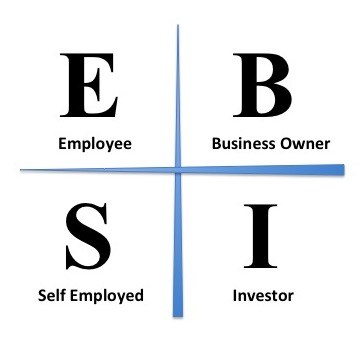I watched my dad work till the day he died. On his last day at the office, he came home in the evening as usual and retired to bed. A few hours later he was moved to the hospital at my mom’s insistence. Three days after he was gone.
His quick and sudden demise capped a stellar career as a medical doctor running his clinic. In and out of season, year in and year out, his reassuring presence had consoled thousands who had walked through his office doors in search of treatment. At a certain point imagining life without him seemed unthinkable.
He was like aging wall paint, a fixture so constant you almost take it for granted. Sure, there are a few cracks here and there and the luster diminishes ever so slightly every passing year, but you expect it to remain.
Well, all that has changed now.
Now, I can only reflect.
Shortly after he passed, I realized the old man had almost literally moved from the office to the grave. His last holiday was so far in the past, I think my age was still in the single digits when it happened.
My father worked hard to afford the life we lived (by “we” I mean everybody and anybody who needed his help–his generosity and open-handedness bordered on sainthood), but today I look back and wonder: at what cost?
He was well aware of the intricacies and demands of self-employment, and he spent a considerable amount of time and effort trying to break away from the unending cycle most S quadrant individuals live.
Cashflow Quadrant

If you’re familiar with Robert Kiyosaki’s cashflow quadrant, you know that there are four ways in which everybody in the world makes money. People make money either as employees, small business owners or self-employed, investors, or big business owners.
The majority of people start out as employees in life because that is what has been ingrained in us from childhood to aspire to, and of that majority, a few highly intelligent, highly capable individuals catch the entrepreneurial bug and decide to go into business for themselves.
My father caught the entrepreneurial bug in the early nineties. He had already made a name for himself working for the government and other privately owned clinics, so he quickly gathered a following when he opened his own practice.
The self-employed quadrant is a bit of a double-edged sword, though. There’s a tradeoff that happens shortly after you move into it.
Self-employed people make many times the money that employees make. But they soon realize a lot more goes into running a business than the technical aspect they are good at. They get caught up in administration, marketing, human resource, inventory, and a host of other things they never had to deal with as employees in a system.
They soon realize that they have to work ten times harder than they ever did as employees if their business is going to survive and flourish. Self-employed people make more money, but they have far less time.
Choosing a Different Path

I can only speculate on whether or not my dad worked himself to death. At many points in his sojourn in the S quadrant, he tried unsuccessfully to transition into the B quadrant where he would have finally been able to extricate himself from the arduous constancy of self-employment, so there’s no doubt that he felt the strain of the choices he made.
I will forever be grateful to him for the example of hard work and consistency that he set. It is one I hope to pass on to his grandchildren–but not in the way that he did. I’ve decided to choose a different path apart from the S quadrant.
Certainly, not the E quadrant, there is no chance of that after watching my father run his own business. I’ve chosen to live in the B quadrant, to build a business that runs on a system that doesn’t require me to be present all the time. I’ve chosen to achieve this by building an AMWAY business way past the Diamond level.
I choose not to live to work like my father did. I choose, rather, to work for a few years so that I can live in freedom for the remainder of my life.
And this brings me to the original question in the title: What’s the opportunity cost?
What’s the Opportunity Cost of Not Building Your AMWAY Business Every Day?
What’s the opportunity cost when I don’t go out to build my AMWAY business every single day for whatever reason?
I think a lot of the excuses IBOs give themselves to get out of doing what is needed to grow their businesses sprout from improper framing. I’ll explain:
For most people, the opportunity cost for not going out contacting is the two or three contacts you could have acquired that day who may or may not go on to be platinum legs in your business. And that’s true. But for many people, that’s not concrete enough to be compelling. After all, you could just go out the next day (or 3 weeks later) and pick up where you left off, right?
It’s time to frame things differently. It’s time to reassess what is truly at stake when you opt out of consistently and persistently building your AMWAY business.
For me, every time I don’t go out there, I choose a future I don’t want. Failing to go out there to move volume and meet people is taking a step closer to something I continue to grieve over. The opportunity cost for me is choosing to work myself to death as my father did.
My suggestion to all aspiring IBOs out there would be to reframe the internal conversation in their minds into concrete, more compelling terms.
Because, unless you can find an opportunity cost that is compelling enough to consistently get you off the sofa and unto the streets every single day, you risk allowing the slacker in you to prevail over the winner in you. What’s your opportunity cost?

